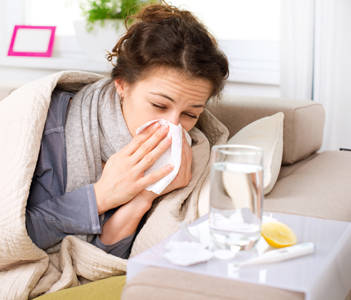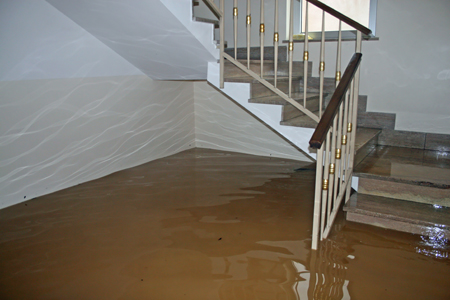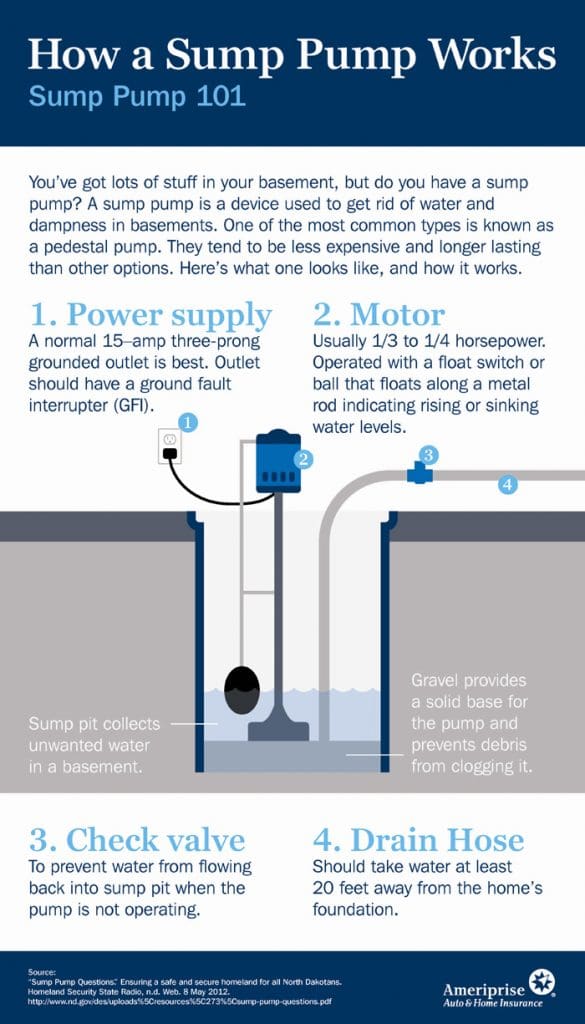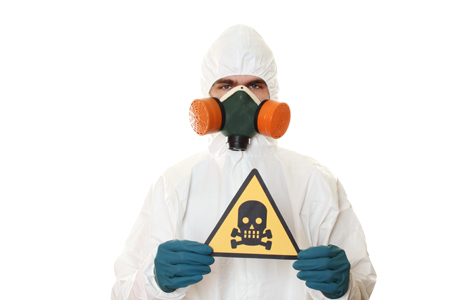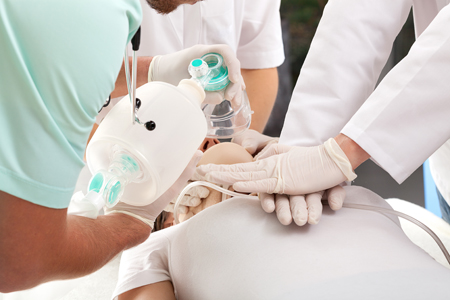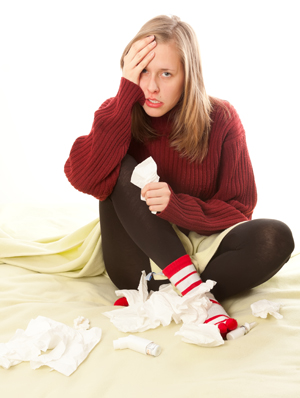
by Eric Brown | Jan 12, 2016 | Air Conditioning, Basement Mold, Beware Of Mold When Buying A Home, Bleach and Mold, Can Black Mold Poison You?, Can Mold Kill?, Chronic Inflammatory Response Syndrome (CIRS), Flood Clean Up, Health, Indoor Air Quality, Killing Mold, Mold and Asthma, Mold and Depression, Mold and Multiple Sclerosis, Mold and Parkinson's Disease, Mold and Sinusitis, Mold Facts, Mold Information, Mold Inspection, Mold Remediation, Mold Removal, Mold Removal Cost, Mold Risk During Renovation, Questions and Answers, Stachybotrys Black Mold, Toxic Mold, Water Damage Restoration
Top 20 Most Shared Mold Health and Prevention Articles In Georgia
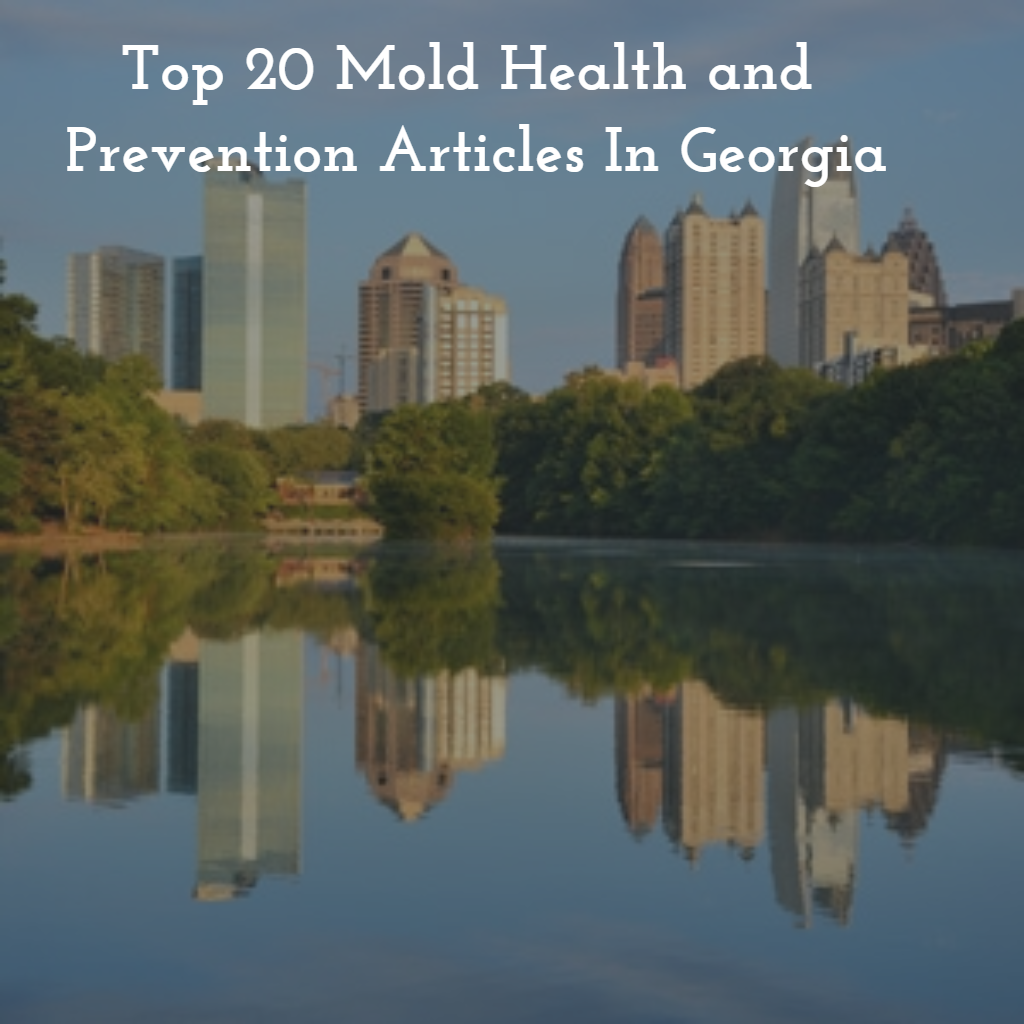
Top 20 Most Shared Mold Health and Prevention Articles In Georgia
August, 2015, marked a historic month for Mold B Gone.
We launched this website, www.moldbgonega.com, dedicated to creating mold awareness for residents of Georgia.
Listed below are the top 20 articles, listed in the order of most viewed.
If you have questions or need help, the Mold B Gone Team looks forward to serving you. Call 678-697-6267 or send us an e-mail!
We have been serving Georgia since 2009 and have built a solid reputation in the state because of our expertise and knowledge, 1 year up to 25 year guarantee, and peace of mind we offer our customers.
Twenty Most Shared Mold Health and Prevention Articles In Georgia
- Are You Sick From Mold Because Of Your Genes?
- Top 10 Facts About Mold
- 7 Places Mold Hides In Your Home!
- Is Mold Sickness A Hidden Epidemic?
- Why Is Black Mold A Health Concern?
- Are Sinus Infections Caused By Mold?
- Can Toxic Black Mold Poison You?
- How Do I Know If Mold Is Making Me Sick?
- Are Dead Mold Spores Harmful?
- How Does Mold Cause Depression?
- Does Mold Cause Multiple Sclerosis?
- What Is The Link Between Mold and Parkinson’s Disease?
- Is Your Air Conditioner Making You Sick?
- 10 Tips To Prevent Basement Mold!
- Top 10 Reasons Mold Is Scary!
- The #1 Mistake Home Buyers Make!
- How Is Mold Removal Cost Determined?
- 8 Steps To Mold Remediation Success!
- What Is The Link Between Mold and Asthma?
- Top 3 Facts About Water Damage Restoration

by Eric Brown | Dec 31, 2015 | Uncategorized
Happy New Year!

Happy New Year!
From all your friends at Mold B Gone, we want to thank you for your patronage during 2015 and wish you all the best in 2016. May you achieve your dreams and make the best of the new year. We look forward to serving you in 2016. Cheers!
Make New Year’s goals. Dig within, and discover what you would like to have happen in your life this year. This helps you do your part. It is an affirmation that you’re interested in fully living life in the year to come. (Melody Beattie)
I hope that in this year to come, you make mistakes. Because if you are making mistakes, then you are making new things, trying new things, learning, living, pushing yourself, changing yourself, changing your world. You’re doing things you’ve never done before, and more importantly, you’re doing something. (Rainer Maria Rilke)
Your success and happiness lies in you. Resolve to keep happy, and your joy and you shall form an invincible host against difficulties. (Helen Keller)
Let our New Year’s resolution be this: we will be there for one another as fellow members of humanity, in the finest sense of the word. (Goran Persson)

by Eric Brown | Dec 20, 2015 | Can Black Mold Poison You?, Can Mold Kill?, Christmas Tree Mold, Chronic Inflammatory Response Syndrome (CIRS), Health, Indoor Air Quality, Killing Mold, Mold and Asthma, Mold and Sinusitis, Mold Facts, Mold Information, Mold Removal, Questions and Answers, Toxic Mold
What Is Christmas Tree Syndrome?

What Is Christmas Tree Syndrome?
Recently, a newspaper article was published to explain the potential health concerns caused by your Christmas tree: “How CHRISTMAS TREES can cause hay fever hell: Pollen grains, dust and mould can trigger sneezing, coughing and a runny nose”
The article dubbed the illness, Christmas Tree Syndrome, because 1 in 3 (approximately 35 percent) people get sick, suffering from hay fever like symptoms, soon after the Christmas tree is set up in the home.
This article explains what causes Christmas Tree Syndrome and provides recommendations on how you can minimize the potential health issues caused by this indoor air quality issue.
What Are The Health Symptoms of Christmas Tree Syndrome?
Typical signs that your tree is making you ill include the following:
- Asthma attacks, usually triggered by cladosporium mold
- Rhinitis
- Runny nose
- Sinus pain
- Sneezing
- Wheezing
- Coughing
- Cold like symptoms, that subside when away from the home or the room with the tree in it.
Mold Is The Cause Of Christmas Tree Syndrome!
Prior to the studies documented below, it was thought that tree pollen or even weed killer applied to Christmas trees made people ill.
However, as the studies below conclude, the core cause of Christmas Tree Syndrome is mold, which releases spores and causes allergic reactions:
“Researchers at St. Vincent’s Medical Center in Bridgeport, Connecticut, found that a room containing a fresh Christmas tree for two weeks had mold levels that were five times the normal level. Other studies have shown that levels this high can cause allergic rhinitis and asthma symptoms, says the study’s coauthor, allergist and immunologist Philip Hemmers.” (A fresh Christmas tree for two weeks had mold levels that were five times the normal level)
In another study Dr. John Santilli, compared the level of mold spores in the home before and after the tree was placed in the home. The normal level of mold spores is 800 per cubic meter, but within 14 days of the Christmas tree being in the home, the level of mold spores increased to 5,000 spores per cubic meter.
Another scientific study by allergy specialist, Dr. Lawrence Kurlandsky at Upstate Medical University in New York set out to determine why respiratory illnesses peak around Christmas. The study found 53 different kinds of mold, including, aspergillus, penicillium, cladosporium and alternaria, which can trigger asthma attacks, sneezing and a runny nose. One of the key conclusions made by this study was 70 percent of the molds found triggered allergies and asthma.
What Can I Do To Minimize Mold Exposure From My Christmas Tree?
Mold spores are found naturally on Christmas trees, which will flourish once they are in a centrally heated home.
With this in mind, if you can manage Christmas with an artificial tree, that is the best solution. Please note, artificial trees can accumulate a layer of dust and even mold if not stored properly. Be sure to store your artificial tree in a dry area and preferably in plastic tubs to minimize exposure to moisture and dust.
However, if you must use a live Christmas tree, here are some tips to minimize the health impact:
- Thoroughly hose down your tree and let it dry before bringing it into the house. If you bought your tree at a nursery, ask if they have tree washing services.
- Clean all ornaments and lights before putting on the tree; they can harbor dust and molds. Store all decorations in plastic containers that can be easily wiped down since cardboard can potentially attract dust and mold.
- Minimize exposure. If you’re sensitive to molds, keep a live Christmas tree no more than four to seven days.
- Run an air purifier in the same room as the Christmas tree. This may help alleviate symptoms.
- Allergy medication may also help alleviate some symptoms as well.
- Since mold spores may accumulate the longer your tree is in the house, consider getting rid of it first thing on the 26th.
Happy holidays from your friends at Mold B Gone. If you have questions, we are here to help! If you think you have mold, call us, 678-697-6267 or contact us via e-mail for further assistance.

by Eric Brown | Dec 19, 2015 | Uncategorized
Happy Holidays!

Happy Holidays!
Christmas is a time to spend with family and friends. Mold B Gone is grateful to our staff, vendors, and customers. We wish them all the best during the holiday season!
Christmas is the perfect time to celebrate the love of God and family and to create memories that will last forever. Jesus is God’s perfect, indescribable gift. The amazing thing is that not only are we able to receive this gift, but we are able to share it with others on Christmas and every other day of the year. (Joel Osteen)
Christmas waves a magic wand over this world, and behold, everything is softer and more beautiful.(Norman Vincent Peale)
Christmas is the spirit of giving without a thought of getting. It is happiness because we see joy in people. It is forgetting self and finding time for others. It is discarding the meaningless and stressing the true values. (Thomas S. Monson)
He who has not Christmas in his heart will never find it under a tree. (Roy L. Smith)

by Eric Brown | Dec 13, 2015 | Flood Clean Up, Health, Indoor Air Quality, Mold Facts, Mold Information, Questions and Answers, Sewer Backup, Water Damage Restoration
Sewer Backup Causes and Prevention

Sewer Backup Causes and Prevention
A primary cause of a flooded basement is a sewer backup.
Sewer backups occur when sewage from sewer lines back up into your house or business.
Usually basements flood from sewer backups when the sewage water comes up from the drains.
This article will explain what causes sewer backups and how you can prevent them.
Causes of Sewer Backups
- Rainfall
- Tree Roots
- Sanitary Main
- Grease
- Toilet Paper and Foreign Objects
Rainfall
During heavy rainstorms, the excess water inundates public sewer systems with groundwater and stormwater flow entering the sewer lines. A sewer backup will occur because the sewer lines get too full and can not handle the overflow.
Tree Root Blockages
As trees and shrubs grow, the roots expand to seek more moisture. As the roots grow, they can crack the sewer line and eventually cause a blockage.
Sanitary Main Blockage
In some cases, a blockage can occur in a city sanitary main causing a back up into homes and businesses.
Grease
Another major cause of sewer backups occurs when animal fat is dumped down the drain. When the grease cools, it will attach itself to the walls of the sewer pipe, causing other objects to stick to the grease eventually leading to a blockage.
Toilet Paper and Foreign Objects
When too much toilet paper, paper products (paper towels, disposable/cloth diapers, and feminine products) or foreign objects are flushed down the toilet, they can get stuck when they meet a bend in the sewer line causing sewer waste to to stick to the objects, resulting in a blockage and eventually a backup.
How To Prevent Sewer Backups?

Sewage Backup Prevention Infographic
Dispose of Grease Properly
Do not pour cooking oil into your sink, use a heat resistant container and dispose of it properly.
Dispose Paper Products Properly
Since paper towels, disposable/cloth diapers, feminine products, and other small objects down the toilet do not break down quickly, leading to clogs, do not try to flush these items down your toilet.
Replace Pipes
Older homes are particularly susceptible to sewer backups because there are usually older trees and shrubs that have roots seeking more moisture leading to the eventual crack in a sewer line and blockage. To prevent this, you should cut the roots periodically and may want to consider replacing the line and tap pipes with plastic.
Proper Drainage
One of the most effective methods to prevent flooding is to ensure that there is proper drainage around your property. You want to ensure that there is a slope away from the property so water flows away. In addition, ensure that the downspout drains away from your property and periodically clean your eaves-troughs to prevent them from getting blocked.
Install Backflow Prevention Valves / Sump Pump
Backflow valves block the sewer line and prevent the flow of sewage backflows.
If your property is in a low lying location or near a river or lake, we strongly recommend that you install a sump pump. In addition to the utility during a heavy rain fall, sump pumps perform an important function during normal weather because they drain groundwater from under and around your basement floor. Ground water removal reduces the risk of basement floors cracking and shifting from the water pressure.
We recommend that you consult with your plumber for such an installation as it depends on your type of plumbing.

How A Sump Pump Works
Two Reasons Sewer Backup Prevention Is So Important
There are two key reasons you want to prevent sewer backups.
First, preventing excess moisture from entering your home is the key to preventing mold growth.
Second, sewer backups are worrisome because sewer water is category 3 water and contains harmful bacteria that is hazardous to your health.
According to IICRC S500 Standard 3rd Edition, there are over 120 different viruses that can be excreted in human feces and urine and find their way into sewage:
These can include Rotavirus, causing severe and sometimes life-threatening diarrhea in children, Adenoviruses, causing respiratory and eye infections, and Norovirus, a significant cause of gastric flu or stomach flu. There are highly infectious parasitic agents like Giardia and Cryptosporidium that can cause chronic and severe intestinal diseases in both children and adults. Bacterial pathogens in sewage can include Salmonella, Shigella and Escherichia coli. These gram-negative organisms contain endotoxins that are released at the time of cell death and destruction. Endotoxins can cause respiratory inflammation, airway restriction, create the potential allergic and infectious disease responses and when inhaled they may adversely influence the central nervous system.
Steps To Take When Your Sewers Backup
If you experience a sewer backup, take the following actions:
- Call your city’s Sewer Maintenance Division and ask them to check the public lines to ensure that they are not blocked.
- Call a Professional Plumber to have the sewer line cleared.
- Clean up the area. Call a professional Disaster Recovery Service like Mold B Gone that specializes in water damage restoration, mold removal, and prevention. We have protective gear and equipment to clean up the area properly and most importantly understand that to prevent excessive mold growth we must remove all the water and begin drying out the area using air movers and dehumidifiers. All contaminated material must be either disinfected or removed permanently. If you begin the clean up process yourself, follow these safety steps and use rubber gloves, boots, protective clothing, and a respirator.
- Call your insurance provider within 24 hours of the sewer backup to begin the claim process.
The first 48 hours are crucial to preventing mold. Questions? Call Mold B Gone, 678-697-6267 or send us an e-mail.

by Eric Brown | Dec 7, 2015 | Chronic Inflammatory Response Syndrome (CIRS), Health, Indoor Air Quality, Mold and Asthma, Mold and Depression, Mold Facts, Mold Information, Mold Remediation, Mold Removal, Questions and Answers, Stachybotrys Black Mold, Toxic Mold
Why Do Some People Get Sick From Mold And Others Do Not?

Why Do Some People Get Sick From Mold And Others Do Not?
One of the biggest challenges faced by people sick from mold is the fact that doctors, friends, and other family members dismiss their symptoms simply because they, personally, do not get sick when exposed to mold.
Many victims of mold sickness are labelled as hypochondriacs and are accused of not being sick at all.
This is tragic because many people that get sick have no control over their sickness because their bodies have a genetic pre-disposition to mold illness.
The purpose of this article is to explain why.
Legal Challenges Faced By Mold Sensitized Individuals
Sickness from mold has been around for decades.
Victims of mold have tried to plea their cases in the courts seeking compensation for the health damages caused by poorly maintained homes and buildings that had water damage and mold.
Unfortunately, many of the plaintiffs lost their battle because the courts did not believe that mold actually makes people sick.
Despite this, data from thousands of contractors working with occupants of water-damaged buildings documented the health challenges that many mold sensitized individuals faced.
According to Erik Johnson, a mold expert and survivor, it was not until the 1990s, that the World Health Organization, acknowledged that “Sick Building Syndrome” could be caused by toxic mold.
Moving forward, finally, it seems that there is greater recognition that mold is in fact the cause of sickness for many. Earlier this year, the MOLDY documentary featured health professionals and people who have suffered mental and physical health issues after living in moldy homes. This was a ground breaking documentary because it brought the issue of mold and sickness to a much broader audience, thereby creating significant awareness of this issue.
In a presentation at the PLR Expo in Toronto, Canada, in November of this year, CEO of Wonder Makers Environmental, Michael Pinto presented “12 Future Trends In The Restoration Industry“.
One of the most notable trends he cites is a “A Tighter Connection Between Medicine and Environment“.
Pinto cites new diagnosing techniques to identify the illness, Chronic Inflammatory Response Syndrome (CIRS) (detailed below), which legitimizes the tie between Water Damaged Buildings (WDB) and sickness. Research has identified a genetic component to this condition (explained below), a screening test (VCS), and most importantly, a treatment regimen.
Other trends Pinto believes demonstrate the important ties between medicine and the environment include the Environmental Relative Moldiness Index (ERMI) which is a scientific test that analyzes dust samples for 36 mold species. This test provides base information to identify CIRS because 26 of the mold species are considered to be water damage indicators.
This test is important because one sample can be analyzed to identify the extent of water damage in the building that could make someone susceptible to CIRS sick. Importantly, this test will provide an ERMI score, ie. a HERTSMI-2 score that can be given to physicians and will help them assess whether a building will make their patient sick.
Because of the growing medical awareness and the fact that there are now medical tests and drugs to diagnose and treat mold illness, Pinto believes that one of the other consequences of this acknowledgement will be a “More Active Justice System” where plaintiffs will now be able to get compensation because they now have science to back up their claims.
1 in 4 People Has A Genetic Predisposition to Mold Illnes
The most interesting aspect of the research on the effect that Sick Building Syndrome has on patients pertains to genetics. One of the biggest problems with mold sickness is that it impacts everyone differently. Some may experience minor allergies, and other health conditions like asthma and chronic sinusitis, while other mold sensitized patients may suffer severe illnesses.
One physician documented the health symptoms of 227 patients that lived in water damaged buildings during a three year period. What this doctor found was that 98% of his patients had one of the gene types where their immune systems were not able to effectively deal with contaminants from water damaged buildings.
As stated by Pinto:
“In layman’s terms, two different genes have been isolated, which keep some people’s immune systems from functioning properly when they have been exposed to contaminants from water-damaged buildings. Instead of properly identifying and eliminating the foreign invader, those body defense mechanisms increase the problem. When viewed with a basic understanding of genetic distributions, this research made it clear that up to a quarter of the population (25%) is at increased risk from exposure to water-damaged buildings.“
This research is very significant because it demonstrates that up to 25% of the population has a genetic pre-disposition that makes them more susceptible to mold illness and the condition known as Chronic Inflammatory Response Syndrome (CIRS).
Because of this research, the scientific community and legal system is now taking much greater notice because diagnostic tests, lab tests and treatment tools are being developed to help these patients.
What Is Chronic Inflammatory Response Syndrome (CIRS)?
Listed below are the 37 symptoms associated with CIRS.
- Fatigue
- Weakness
- Aches
- Muscle Cramps
- Unusual Pain
- Ice Pick Pain
- Headache
- Light Sensitivity
- Red Eyes
- Blurred Vision
- Tearing
- Sinus Problems
- Cough
- Shortness of Breath
- Abdominal Pain
- Diarrhea
- Joint Pain
- Morning Stiffness
- Memory Issues
- Focus/Concentration Issues
- Word Recollection Issues
- Decreased Learning of New Knowledge
- Confusion
- Disorientation
- Skin Sensitivity
- Mood Swings
- Appetite Swings
- Sweats (especially night sweats)
- Temperature Regulation or Dysregulation Problems
- Excessive Thirst
- Increased Urination
- Static Shocks
- Numbness
- Tingling
- Vertigo
- Metallic Taste
- Tremors
According to Dr. Ritchie Shoemaker, CIRS is:
“an accute and chronic, systemic inflammatory response syndrome acquired following exposure to the interior environment of a water-damaged building with resident toxigenic organisms, including, but not limited to fungi, bacteria, actinomycetes and mycobacteria as well as inflammagens such as endotoxins, beta glucans, hemolysins, proteinases, mannans, c-type lectins and possibly spirocyclic drimanes, plus volatile ogranic compounds.“
For 75% of the population, when exposed to biotoxins caused by mold, the individuals immune system responds by binding with the invading poison that allows its cells to filter the biotoxins through the liver, kidneys, and other organs. In contrast, 25% of the population that have the genetic susceptibility to mold illness get sick because their bodies immune system does not bind to the biotoxin, meaning it is not eliminated and therefore continues to circulate, causing the many symptoms, documented below.
The “C” in CIRS refers to the term “Chronic” because individuals that are exposed to poisons from mold are unable to eliminate the toxins from their body, resulting in on-going and escalating sickness, particularly if the person is continually exposed to mold. This is the primary reason that the first priority of medical practitioners treating mold sensitized patients is to begin the detox process which also must coincide with movement away from the building that is constantly exposing the person to the toxins.
The “I” in CIRS refers to the term “Inflammatory” because the constant exposure to the toxins creates a cycle of sickness, meaning the individual’s immune system is constantly trying to fight the toxins, leading to inflammation.
The “R” in CIRS refers to “Response” because the human body is designed to respond to invading toxins. In the case of patients suffering from mold sickness, the immune system is constantly trying to fight the toxins causing a stress on the complete immune system of the individual, which in turn leads to other health conditions.
As stated by Pinto, the “S” in CIRS refers to “Syndrome” because:
“The symptoms are a result of many factors, including external exposures and internal responses. The contaminants from water-damaged buildings should trigger the activation of an immune response, but some people’s genetic structure does not allow the proper recognition of the biotoxin. Since this combination of circumstances inhibits the clearance of the poison from the body, these harmful substances continue to circulate and create continual damage. With such individuals there is no linear dose/response relationship, meaning that even trivial exposures can create severe problems.“
Is CIRS Life Threatening?
The major problem that individuals with CIRS face is their bodies immune systems become severely compromised and weakened from the vicious cycle of invading poison, immune response, and inflammation.
The end result is many of their bodies systems are damaged leading to a wide range of health conditions, some life threatening.
For this reason, many mold survivors have reported that they have abandoned the primary residence that initially made them sick; instead, seeking shelter in trailer parks, and very dry areas, with desert like conditions where moisture is limited. These drastic measures were taken by these individuals because their bodies have become so sensitized to mold that even minor exposure triggers severe reactions.
Fortunately, the continued research on mold sickness is creating hope because treatments have developed that help individuals detox and eliminate the poisons, followed by rebuilding the immune system so that it regains strength.
Do You Suspect You Have A Mold Illness?
The core problem with CIRS is the fact that there are so many symptoms associated with the condition.
Are you constantly seeking medical attention?
Have you been feeling sick for an extended period of time?
If you think you may be sick because of mold, review the mold sensitized interviews to gather more information.
The next step is to verify that you actually have a bio-toxin illness caused by mold, meaning you should get your home tested for mold.
Then seek out an environmental physician who can properly diagnose, determine if you have a genetic pre-disposition to mold illness, and most importantly begin treatment so your body can properly detox.
If you are diagnosed with mold illness, your physician may request that you leave your home for awhile during the detox process.
During this period, we advise that you get all the mold removed from your home, your contents cleaned, and a thorough cleaning of your HVAC system to prevent the spread of mold spores after the remediation is complete.
Questions? Need help? Mold B Gone looks forward to serving you, with the added benefit that we understand the needs of mold sensitized individuals. Call, (470) 545-4467, or send us an e-mail.

by Eric Brown | Nov 30, 2015 | Air Conditioning, Can Black Mold Poison You?, Can Mold Kill?, Flood Clean Up, Health, Indoor Air Quality, Killing Mold, Mold Facts, Mold Information, Mold Remediation, Mold Removal, Questions and Answers, Stachybotrys Black Mold, Toxic Mold, Water Damage Restoration
Can Mold Kill?

Can Mold Kill?
Recently a news article featured a woman who believes that she was poisoned by black mold.
After being exposed to black mold for four years in a friend’s house in Niagra Falls, Susan Crane-Sundell stated: “It’s very close to killing me now.”
Crane-Sundell began getting sick after about 18 months of living in the house. When she got sick, she saw a dozen doctors and underwent expensive medical tests. Recently, she found out that the cause of her sickness was black mold which has poisoned her system to the point that she is bed-ridden.
Can Toxic Black Mold Kill?
This is an interesting question and one that was posed this summer by a reporter in New Orleans, Jed Lipinski, NOLA.com Staff reporter | The Times-Picayune that published an article: Did a moldy building kill 4 New Orleans college professors?
The article poses this question because four SUNO professors, who died within three months of each other, all worked on the second floor of the Multipurpose Building on the SUNO campus:
- Marina Dumas-Hayes official cause of death: breast cancer recurrence;
- Felix James official cause of death: heart disease;
- Sudipta Das official cause of death: breast cancer recurrence;
- Guillarne Leary official cause of death: pulmonary embolism.
Officially, toxic mold is not linked to their deaths because the Centers for Disease Control states that there is no scientific evidence linking mold exposure to pulmonary embolisms, heart disease or breast cancer recurrence. In addition, according to the article:
No federal guidelines exist for what constitutes a safe quantity of mold, making it difficult for inspectors to know whether occupants of a building or home are at risk. Building managers say they often are forced to rely on occupant complaints to determine that a remediation was unsuccessful.
Lipinsky questions the official cause of the death for several reasons.
Background: Water Damage Lead To Significant Mold Infestation
After the levee breaches in late August, 2005, the Southern University of New Orleans (SUNO) campus was one of the hardest hit institutions. In fact, the campus was submerged under water for three weeks and the power plant was not functional, meaning the air conditioning in all 11 buildings was shut off. Power was not restored for two years.
In response, SUNO moved its faculty, students, and staff to temporary buildings that the Federal Emergency Management Agency (FEMA) provided. Efforts to renew SUNO stalled because initial plans to rebuild the campus in another location were rejected by FEMA due to a lack of funding. Conditions inside the 11 buildings continued to worsen as mold spread throughout because the air conditioning was not yet functional.
Three years later, in 2008, work began to clean up the affected buildings.
The Multipurpose Building, a two-story concrete structure, was flooded with 4.5 feet of water after the levee failures during Hurrican Katrina. The state claims the building was deemed safe to occupy before faculty moved in because a licensed contractor, Zimmer-Eschette Services, performed a full environmental remediation during the summer of 2008 and the indoor air samples were deemed “acceptable.” The building was re-opened in August, 2008 so staff could move in for the Fall session.
Air Quality Tests Showed Stachybotrys Mold, Yet Staff Still Allowed To Work In Building!
In over 20 years of studying mold, I have never seen air samples like the ones in this report. (Dr. Richie Shoemaker, a physician and expert in the field of biotoxin-related illness and author of the book “Surviving Mold.”)
This was not a building you wanted to have people working or living in. (David Straus, a retired professor of microbiology and immunology at Texas Tech University Health Sciences Center who spent years doing environmental testing for a Dallas-based company focused on building-related illnesses.)
It seemed like the building hadn’t been cleaned at all. It had that moldy, wet, distinct smell of Hurricane Katrina. (Cynthia Ramirez, tenured professor at SUNO)
Soon after moving into the building, faculty began complaining about respiratory problems.
According to nationally recognized mold experts, the cause of the health complaints was mold because the remediation was not done properly and the indoor air samples were “unacceptable”. In fact, these experts do not believe the building was safe to work in because stachybotrys mold spores were still present and documented in the air quality clearance tests conducted by the AIMS Group.
Stachybotrys was present in 25 of the 62 interior air samples. According to microbiologist, David Straus:
If you find Stachybotrys in a building, let alone in 25 different places, it’s your duty as an environmental remediator to remove it before people move in.
The stachybotrys was not removed because the environmental consultant claimed that it was present in the tests because it came in from the exterior air. Mold experts disagree with this assessment:
The suggestion that 25 interior findings of Stachybotrys has its source in the outdoors is unsupported by any scientific literature at all. If you don’t find Aspergillus or Penicillium in air samples, you’re not outdoors. (Dr. Richie Shoemaker, a physician and expert in the field of biotoxin-related illness and author of the book “Surviving Mold.”)
What Are The Health Effects Of Stachybotrys Mold?
“Since the modes of activity of trichothecenes differ from aflatoxins and other mycotoxins, the combinations of mycotoxins could be additive or even synergistic, which could significantly reduce the amount of either mycotoxin required to induce an immunosuppressive or toxic effect. Immunosuppressive and combinational effects of multiple mycotoxins may constitute major components in the adverse health effects reported by many of the victims of mold exposure.” (A risk assessment model for mycotoxin-producing molds on human health in indoor environments)
According to Michael Pinto, CEO of Wonder Makers Environmental, stachybotrys molds help to decay organic matter, and the species known as Stachybotrys atra (sometimes known as Stachybotrys chartarum) is prone to growth indoors. The lack of power and air conditioning in the SUNO buildings provided the best possible conditions for stachybotrys to grow because there was moisture, food (ceiling tile, drywall, paper vapor barriers, wallpaper, insulation backing, cardboard boxes, and paper files), the right temperature, and lots of time to promote growth.
Stachybotrys is a health concern because studies have demonstrated that exposure, even at low levels can suppress the immune system contributing to bacterial and viral infections, coughing, skin irritation, and other allergic reactions.
The primary reason that stachybotrys is such a major health concern is that it produces a mycotoxin (i.e., poison from a fungus) named trichothecenes. When inhaled or ingested, stachybotrys causes the following health conditions:
- Sore/hoarse throat
- Cold and flu symptoms (headaches, slight fever, and muscle aches)
- Nosebleeds
- Tingling or burning of nose, mouth, and perspiration areas (under the arms or between the legs)
- Chronic fatigue
- Dizziness
- Nausea/vomiting
- Memory loss
- Attention deficit/concentration problems
- Personality changes such as irritability or depression
- Neurological disorders such as tremors
- Hair loss
- Coughing with blood
- Bleeding in the lungs (hemosiderosis)
- Damage to internal organs including blood, liver, kidneys, and lungs
Stachybotrys has even been linked to promoting cancer.
Staff and Faculty Had Recurring Health Issues From Mold Exposure
In the absence of federal regulations on what constitutes a safe amount of mold, humans are often forced to act as canaries in a coal mine, alerting building managers to air quality issues….According to faculty and staff who had offices in SUNO’s Multipurpose Building, the university showed a lack of concern for health complaints between 2008 and 2013.
Considering that stachybotrys was found in the clearance test, it should not surprise anyone that the management of SUNO received many complaints from staff and faculty.
Within months of the move, several faculty were diagnosed with bronchitis. For five years, between 2008 and 2013, Das, Leary, James, and Dumas-Haynes taught classes on the second floor of the Multipurpose Building. Prior to their deaths, both Leary and Dumas-Haynes suffered from severe respiratory problems. They were not the only one’s that suffered as 10 other faculty and staff on the same floor complained of similar symptoms: coughing, wheezing, difficulty breathing, asthma attacks, nausea and migraines.
As complaints mounted, staff demanded that the Administrators test the air quality again. In 2009, SUNO hired the AIMS group to come in and test the air quality, but to the surprise of faculty, the air quality test did not sample the air for mold, but only measured how the air was flowing through the building. Apparently, AIMS did not test for mold because they were not asked to.
According to a former SUNO staff member, it was obvious that the building had a mold problem:
A moldy odor hit you when you walked inside the building. You didn’t need a specialist to know there was mold in there.
The burden of the lack of action rests with the administrators who many staff believe did not take the issue of mold seriously and minimized the health consequences to the point where facilities workers just painted over the mold. Obviously a band-aid solution.
Based on the recurring complaints by staff and the lack of action by administrators, is it fair to conclude that toxic mold did play a role in the deaths of the four Professors?
Did Mold Kill The Four Professors?
The evidence suggests that the water-damaged building was a contributing factor to the occurrence of the four fatalities. (Dr. Michael Gray, a physician and toxicologist in Arizona who has spent more than 20 years treating patients exposed to water-damaged buildings.)
According to the CEO of Wonder Makers Environmental, Michael Pinto, there is mounting evidence that mold causes sickness:
There is now good science that documents that exposure to fungal contaminants and damp environments not only triggers standard allergenic responses, but pushes certain parts of the immune system into overdrive. In essence, the body’s defense system ends up attacking the host as well as the biological invaders. (The Answer to the Mold Illness Questions Is: All of the Above)
In 2009, the World Health Organization, produced a 228 page document entitled WHO Guidelines for Indoor Air Quality: Dampness and Mould and concluded the following:
When sufficient moisture is available, hundreds of species of bacteria and fungi – particularly mould – pollute indoor air. The most important effects of exposure to these pollutants are the increased prevalence of respiratory symptoms, allergies, and asthma, as well as disturbance of the immune system. Preventing (or minimizing) persistent dampness and microbial growth on interior surfaces and building structures is the most important means of avoiding harmful effects on health.
Further, Lipinski, interviewed several experts about the specific causes of death attributed to the four professors.
With respect to Professors Dumas-Hayes and Das, whose documented cause of death was breast cancer, Dr. Maureen Lichtveld, chairwomen of environmental health at the Tulane University School of Public Health, stated the following:
Women in remission from breast cancer often have compromised immune systems, which makes fighting illness and infection more difficult. It is recommended that such women avoid indoor environments where the level of mold or dust exposure would cause public health concerns.
Many mold survivors chronically exposed to mold develop a condition known as Chronic Inflammatory Response Syndrome (CIRS), defined as:
“An accute and chronic, systemic inflammatory response syndrome acquired following exposure to the interior environment of a water-damaged building with resident toxigenic organisms, including, but not limited to fungi, bacteria, actinomycetes and mycobacteria as well as inflammagens such as endotoxins, beta glucans, hemolysins, proteinases, mannans, c-type lectins and possibly spirocyclic drimanes, plus volatile ogranic compounds.” (What is Mold Illness? Better yet, do people get sick after being exposed to water-damaged buildings?)
CIRS is associated with 37 health symptoms, including asthma, dizziness, migraines, and bronchitis. A study in the Journal of Clinical Oncology found that women with chronic inflammation were twice as likely to develop a recurrence of breast cancer, which happenned with both Professors Dumas-Hayes and Das.
Dr. Shoemaker, who has studied CIRS extensively, believes that mold may also have contributed to the deaths of Professors James and Leary because more than 66 percent of those with the diagnosis develop clotting abnormalities, further stating that: “Pulmonary embolism is incredibly common in patients with chronic inflammation and can impact cardiovascular disease as well.”
Dr. Gray agrees with Shoemaker, citing studies showing that people who live or work in water-damaged buildings have a reduced number of “natural killer cells,” which defend against the expression of malignant cells and tumors: “People are much more likely to go out of remission when they are in a water-damaged environment because of the reduction of natural killer cells that environment provokes.”
Key Conclusions About Black Mold!
SUNO killed those people. We told them over and over: It’s not safe in here. But people had to die before anything was done. (Cynthia Ramirez, tenured professor at SUNO)
Some key conclusions can be arrived at based on the article written by Lipinski.
1. The lack of action to remediate the Multipurpose Building led to a large mold infestation, which experts agree was not effectively remediated because the clearance tests showed remaining evidence of stachybotrys within the building.
2. SUNO administration failed to address the health complaints of staff and faculty, at best using band-aid solutions.
3. Staff and faculty suffered from ill health because of continued exposure to stachybotrys mold.
4. The deaths of Professors Dumas-Hayes, Das, James, and Leary were likely hastened by the five years of exposure to the mold.
Staff and faculty did not have to suffer. Once it was found that the air quality tests showed that there was stachybotrys mold still in the building, administration should have taken action. Simply put:
Building owners are responsible for providing a healthy workplace or living environment free of excess moisture and mould, by ensuring proper building construction and maintenance. (WHO Guidelines for Indoor Air Quality: Dampness and Mould)
It appears that only after the deaths of the four Professors that action was taken. In February, 2014, SUNO moved staff out of the offices in the Multipurpose Building and decided to demolish it. SUNO plans to build a new building now. Perhaps, this should have been done in the first place to prevent all the needless suffering.
If you are concerned that you may have toxic black mold in your home or business that requires removal, call Mold B Gone, 678-697-6267 or send us an e-mail.
Article Sources and References
by Eric Brown | Nov 25, 2015 | Uncategorized
Mold B Gone Wishes You A Happy Thanksgiving!

Happy Thanksgiving From Mold B Gone
From our family here at Mold B Gone, to you and yours, we wish you a very happy Thanksgiving!
We are grateful for each of you – thank you for your continued business, referrals and opportunities to partner together.
Be thankful for what you have; you’ll end up having more. If you concentrate on what you don’t have, you will never, ever have enough. (Oprah Winfrey)
We can only be said to be alive in those moments when our hearts are conscious of our treasures. (Ralph Waldo Emerson)
They do not love, that do not show their love. (William Shakespeare)
We must find time to stop and thank the people who make a difference in our lives. (John F. Kennedy)

by Eric Brown | Nov 20, 2015 | Health, Indoor Air Quality, Mold Facts, Mold Information, Mold Remediation, Mold Removal, Questions and Answers, Stachybotrys Black Mold, Toxic Mold
Why is Stachybotrys Mold A Health Concern?

Why is Stachybotrys Mold A Health Concern?
Stachybotrys molds decay organic matter. The most common species, Stachybotrys chartarum, sometimes referred to as Stachybotrys atra often grows indoors.
Ideal conditions for Stachybotrys growth include moisture, a nutrient/food source, temperature, and time. Ideal humidity for this black mold is a relative humidity of 90% or higher for it to begin the germination growth process. Stachybotrys feeds on materials with a high cellulose content such as hay, straw, wood chips, and building materials such as ceiling tile, drywall, paper vapor barriers, wallpaper, insulation backing, cardboard boxes, and paper files.
Stachybotrys Is The King Of Molds!
Stachybotrys is considered the King of Molds because it will develop into the dominant mold group if the conditions are favorable and will crowd out the other molds that began feeding on the material first.
This happens because unlike other molds like Aspergillus, Penicillium, and Cladosporium which begin growing within one to two days, Stachybotrys takes one to two weeks to begin growing.
How Does Black Stachybotrys Mold Spread?
When Stachybotrys mold is growing on wet material, the spores do not disperse as easily because the spores are held together by a sticky/slimy coating. However, when the material dries out or is disturbed, the spores will spread through the air.
The main concern of a mold remediation contractor is to prevent the spread of toxic black mold. The most effective method of doing this is through containment, which is the process of creating a poly barrier around the area where the Stachybotrys mold is growing.
This procedure is so important because Stachybotrys spreads by releasing spores. Mold contaminated materials must be removed and disposed of because this mold does not just grow on the surface of the material; it has root-like tendrils called mycelia, meaning it is able to penetrate the surface.
Typically Stachybotry mold grows in clusters at the end of stem-like structures known as hyphae.
Top 15 Health Problems Caused By Toxic Stachybotrys Black Mold
Stachybotrys produces a mycotoxin (i.e., poison from a fungus) named trichothecenes.
Stachybotrys black mold is a health concern because animal studies have shown that one of the major effects of trichothecenes is immuno-suppression.
In fact, even low level exposure can suppress the immune system resulting in bacterial and viral infections, coughing, skin irritation, and other allergic reactions, and there is some speculation that it may even cause cancer.
Listed below are the top 15 health conditions caused when toxic Stachybotrys black mold is inhaled or ingested:
- Sore/hoarse throat
- Cold and flu symptoms (headaches, slight fever, and muscle aches)
- Nosebleeds
- Tingling or burning of nose, mouth, and perspiration areas (under the arms or between the legs)
- Chronic fatigue
- Dizziness
- Nausea/vomiting
- Memory loss
- Attention deficit/concentration problems
- Personality changes such as irritability or depression
- Neurological disorders such as tremors
- Hair loss
- Coughing with blood
- Bleeding in the lungs (hemosiderosis)
- Damage to internal organs including blood, liver, kidneys, and lungs
If you are concerned that you may have toxic black mold in your home or business that requires removal, call Mold B Gone, 678-697-6267 or send us an e-mail.
Top 10 Warning Signs of Black Mold Exposure!
The infographic below, courtesy of the Mold Blogger, provides an excellent summary on black mold and the health symptoms of exposure.

Top 10 Warning Signs of Black Mold Exposure

by Eric Brown | Nov 13, 2015 | Health, Indoor Air Quality, Mold and Depression, Mold Facts, Mold Information, Mold Inspection, Mold Remediation, Mold Removal, Questions and Answers
Why Does Mold Cause Depression?

Why Does Mold Cause Depression?
Earlier we published an article that examined why Microbial Volatile Organic Compounds (MVOCs) could affect cognitive and motor skills of people suffering from Parkinson’s Disease.
Not surprisingly, mold not only has an impact on dopamine in the brain, but can also impact the part of the brain that regulates mood.
This is the reason that many people exposed to mold suffer from symptoms of depression:
- Difficulty concentrating, remembering details, and making decisions;
- Fatigue and decreased energy;
- Feelings of guilt, worthlessness, and/or helplessness;
- Feelings of hopelessness and/or pessimism;
- Insomnia, early morning wakefulness, or excessive sleeping;
- Irritability, restlessness;
- Loss of interest in activities or hobbies once pleasurable, including sex;
- Loss of pleasure in life;
- Overeating or appetite loss;
- Persistent aches or pains, headaches, cramps, or digestive problems that do not ease even with treatment;
- Persistent sad, anxious, or “empty” feelings;
- Thoughts of suicide or suicide attempts
The purpose of this article is to provide you with a basic understanding of scientific and anecdotal data linking mold with depression.
Similar Symptoms For CIRS and Depression
Since 2011, I have been researching and writing about mold, asbestos, and other indoor air quality issues. During this research, I have had the opportunity to network and interact with many mold survivors that I met through social media channels. Fortunately, many individuals have been willing to share their stories through formal interviews, many of which are published by Wonder Makers Environmental on their website dedicated to creating a resource on mold, www.moldsensitized.com
A key conclusion that can be gained from these interviews: mold does have an impact on the brain. In the words of the survivors:
“My ears were ringing and it felt as if my head was about to explode.” (Sandy Wolfe: Mold Survivor)
“I had anxiety, brain fog, memory and cognition problems, difficult concentrating and speaking.” (Beth Jarret: Mold Survivor)
“I developed chronic headaches and migraines, fatigue, muscle weakness, dizziness, memory issues, and mood swings.” (Mary DeBoer: Mold Survivor)
“I had blurry vision, insomnia, rage, anxiety, panic attacks, ringing ears, twitching muscles, hallucinations, dizzinesss, and nightmares.” (Amy Nix: Mold Survivor)
“The first symptom that alerted me that something was wrong was the sensation of crawling on my skin along with ice pick/pinprick pain in random places. Shortly after, I noticed that I had the inability to recollect words, slurry speech, memory loss, and an overwhelming fatigue. Other symptoms included vision disturbances, irritability and severe depression.” (Hilesca Hidalgo: Mold Survivor)
“I had burning eyes, headaches, pain in my arms and legs, balance issues, impaired cognitive abilities, and vision issues.” (Kelli Hamilton: Mold Survivor)
All of these survivors suffered from a condition known as Chronic Inflammatory Response Syndrome (CIRS). Listed below are the 37 symptoms associated with CIRS.
- Fatigue
- Weakness
- Aches
- Muscle Cramps
- Unusual Pain
- Ice Pick Pain
- Headache
- Light Sensitivity
- Red Eyes
- Blurred Vision
- Tearing
- Sinus Problems
- Cough
- Shortness of Breath
- Abdominal Pain
- Diarrhea
- Joint Pain
- Morning Stiffness
- Memory Issues
- Focus/Concentration Issues
- Word Recollection Issues
- Decreased Learning of New Knowledge
- Confusion
- Disorientation
- Skin Sensitivity
- Mood Swings
- Appetite Swings
- Sweats (especially night sweats)
- Temperature Regulation or Dysregulation Problems
- Excessive Thirst
- Increased Urination
- Static Shocks
- Numbness
- Tingling
- Vertigo
- Metallic Taste
- Tremors
Comparing the list of CIRS symptoms with the symptoms of depression listed earlier, it is clear that there are many similar symptoms associated with both conditions. This is likely the reason why many people sick from mold are unable to get proper treatment because they are diagnosed with a depressive disorder as opposed to a health condition caused by exposure to mold.
The biggest challenge mold survivors face is the lack of empathy and knowledge from doctors who do not understand mold sickness. Tragically, some survivors are even told that their sickness is all in their head:
“The doctors told us there was nothing wrong with her as she lay screaming in pain, convulsing on the table. The next ER, at a different hospital told us the same thing. The specialist we were sent to said ‘There is nothing wrong with her, I’ve read the reports. I won’t see her until she has a neuro-psych work-up.” (Debra Rogers: Mold Survivor)
Brown University Study on Mold and Depression
In 2007, researchers at Brown University released a study showing a link between mold and depression.
The study, led by epidemiologist Edmond Shenassa, analyzed data from 5,882 adults in 2,982 households.
The data was collected by the World Health Organization in 2002 and 2003. Interviewers visited 1000s of homes in eight European cities and asked residents a series of questions to assess symptoms of depression, including symptoms of low appetite, self-esteem, and sleep disturbances. They also tried to visually verify the presence of mold by looking at spots on the wall and ceilings.
What they found was that symptoms of depression were up to 40% higher for residents living in visibly moldy households than for residents that did not have mold in their homes.
Based on this survey, they concluded that there is a definite connection between damp, moldy homes and depression.
The studies author, further concluded that:
“Physical health, and perceptions of control, are linked with an elevated risk for depression, and that makes sense. If you are sick from mold, and feel you can’t get rid of it, it may affect your mental health. Healthy homes promote healthy lives.”
Despite the findings of this study, many in the scientific community consider this an anecdotal study because the researchers did not take actual air samples or swab samples of the suspected visual mold. Because of this, the conclusions of this study have been questioned.
Scientific Data Linking Mold With Depression
In her article, The Brain on Fire: The role of toxic mold in triggering psychiatric symptoms, Dr. Mary Ackerley explores the scientific research linking mold with brain disorders, including depression.
Unfortunately, one of the common symptoms of depression is suicide. As stated by Ackerley:
“I have patients who will walk into moldy places and their first sign that something is wrong is that they start thinking about suicide. I see that fairly frequently.”
According to Ackerley and other experts she cites, people feel depressed when exposed to mold because toxins released by mold, mycotoxins, pass directly into the brain.
Mold enters the body through the nose and eyes via the olfactory neurons which directly communicate with the brain.
Once the toxins enter the brain, it causes neuroinflammation which has a negative impact on the frontal cortex of the brain, the pleasure center that rules emotion, leading to depression.
Since Ackerley and other scientists believe that mold can cause depression, they have developed treatment protocols that focus on detoxing the patient.
The first step before treatment is to verify if mold is in fact the cause of sickness, which is accomplished through blood tests and the visual contrast sensitivity test developed by Dr. Shoemaker.
The second step is to begin the detox process. Ackerley has successfully used the drug cholestyramine (CSM), to reduce symptoms by up to 75%, provided the patient removes themself from the toxic environment.
She also recommends her patients to adopt a low carb and low sugar diet and the addition of supplements such as fish oil, magnesium, turmeric, probiotics, and vitamin D.
Mold Does Affect Your Brain Causing Depression!
According to Ackerley, the prevalence of mold induced depression could be quite high:
“One fascinating thing I’d like to point out: Dr. Shoemaker has often said that it’s about 25% of the population is susceptible to biotoxin-associated illness. When you add up who’s been diagnosed with a psychiatric illness, it too adds up to about 25% of the population. Is that a coincidence? Perhaps. But it’s a very interesting coincidence to me.”
With respect to the evidence linking the relationship between mold and depression, it is quite clear that mold does affect the brain and this is confirmed by scientific data, further strengthened by the anecdotal data offered by the Brown University study and the mold survivors who have come forward and documented their symptoms.
How prevalent is mold sickness? According to Dr. Scott McMahon, MD, who appeared in the MOLDY documentary:
“Possibly every doctor…is treating mold illness, and they just don’t realize it.”
If you suffer from depression, here are two questions that you need to ask:
- How healthy is the air quality of my home?
- Does my home have mold?
If you suspect that your depression is caused by poor indoor air quality and mold, contact Mold B Gone so that we can do a formal mold inspection and indoor air quality tests. Peace of mind is just a phone call away, 678-697-6267!






